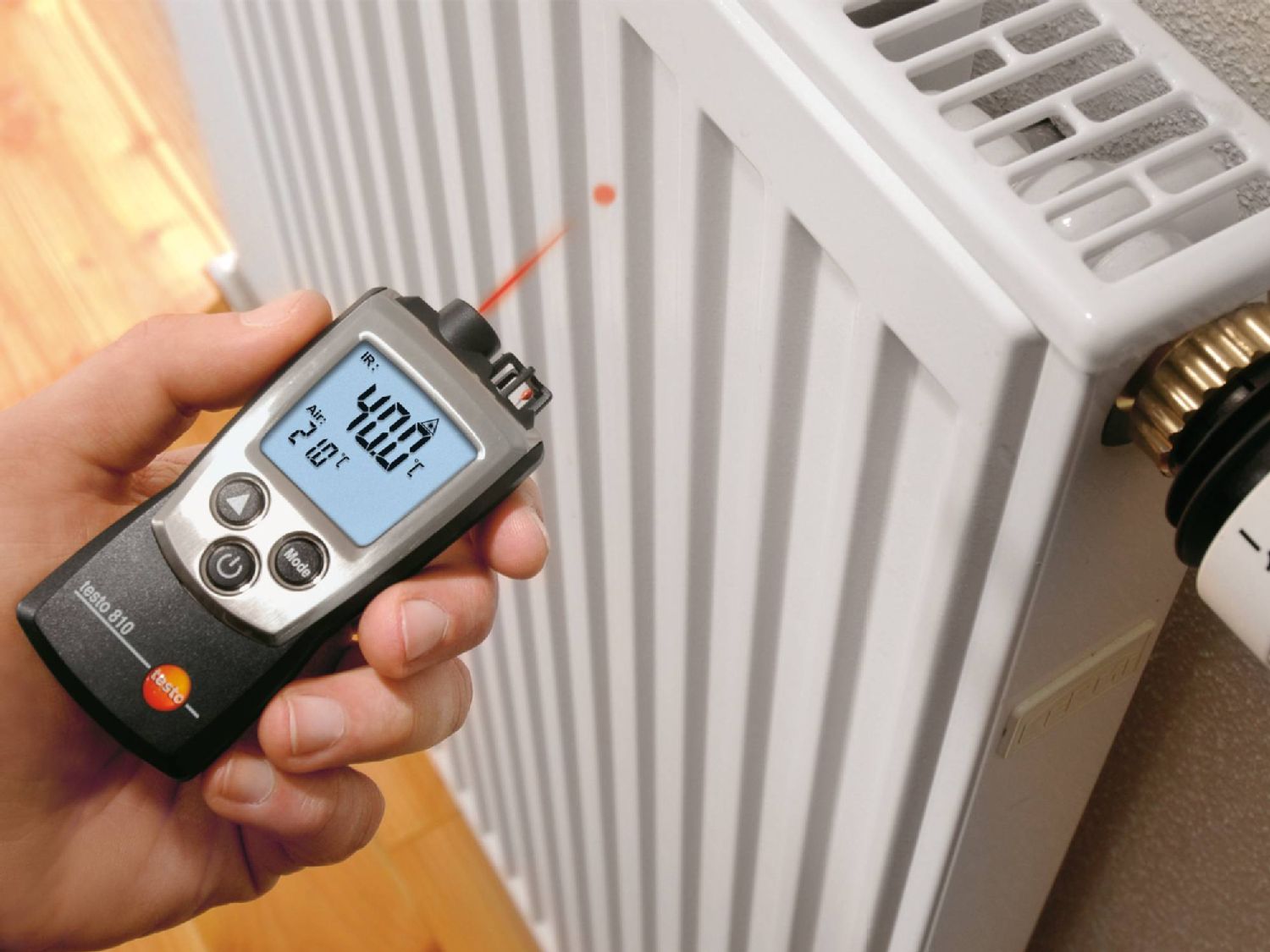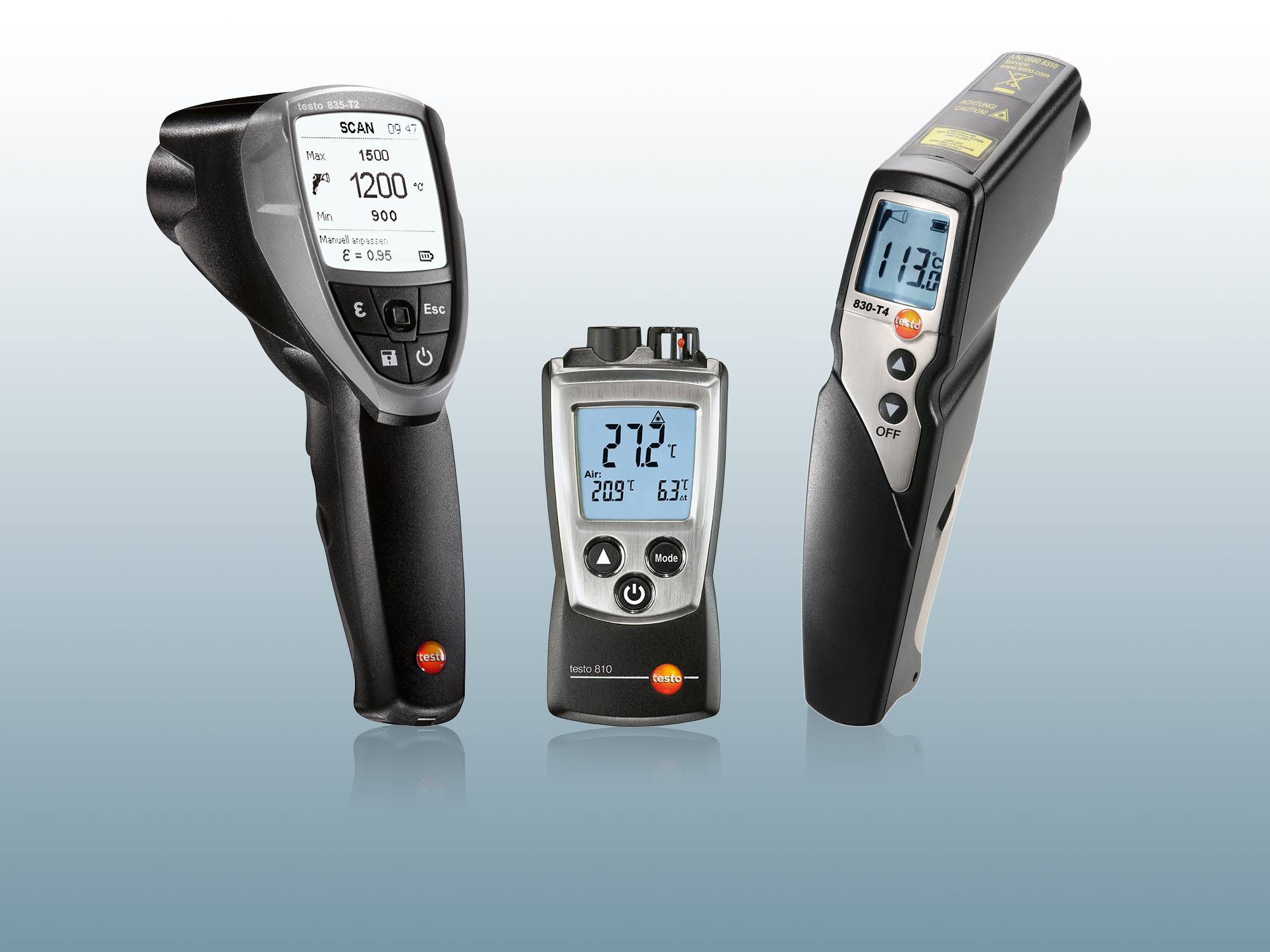
- Robust construction
- High-precision sensor technology
- Comprehensive selection of probes –
customized products too - Calibration and servicing from one provider
For most people on a daily basis, temperature plays a role both for professional and private reasons. A thermometer checks the outdoor or indoor temperature, it is used in warehousing and to monitor compliance with the cold chain in the food industry. Without temperature gauges, many things and situations would not be accurately assessable, because temperatures are perceived subjectively. What seems warm to one person causes another person to freeze. To evaluate temperatures objectively, you need a thermometer. Modern digital thermometers from Testo work with a high degree of precision and reliability, are robust and optimally equipped for the respective application. Different types of thermometers and probes are available:
- Infrared thermometers
- Temperature probes for surface temperatures
- Air temperature probes
- Penetration probes
- Thermal imagers
- Temperature data loggers

Measuring instruments for temperature measurement
Infrared thermometer
Surface temperature measuring instruments

Temperature measuring instruments with fixed or exchangeable probes for surface temperatures.
Air temperature measuring instruments
Penetration thermometer
Immersion thermometer
Temperature measuring strips
Thermal imagers

Visualize temperatures. Ideal for maintenance, the building trade and heating engineering.
Temperature data logger
Digital thermometers: Easy readout of values

No doubt everyone is familiar with those simple thermometers with a measuring scale and a green, blue or red line in the centre. This changes depending on the temperature. The liquid that forms this line expands when heated and contracts again when cooled. So it rises as soon as it gets warmer and falls when it cools down again. Reading the values, however, is often quite inaccurate and barely possible by tenths. The digital thermometer, on the other hand, has a sensor on the front tip of the probe. There are various types of sensor which can be selected for the respective measuring task.
The measurement of temperatures using thermocouples is based on the thermoelectric effect. If two legs made of different metal alloys are welded at their ends, an electrical current flows when the measuring point (hot end) has a different temperature from the cold junction (cold end). Each thermocouple material has its own characteristic curve. The characteristic curve shows the relationship between the temperature applied and the electrical voltage generated. In practice, Testo customer groups mainly use type K thermocouples in industry and air conditioning technology and type T thermocouples in the food sector.
Platinum resistance sensors are based on the so-called PTC resistor effect. All metals are for instance positors, as they have the characteristic of increasing their electrical resistance when the temperature rises (i.e. they conduct current better when cold than when hot). This effect can be used to measure temperatures. Probes with platinum resistance sensors are among the most accurate sensors available. They are durable and resistant to ageing. They are above all used in the laboratory sector.
Thermistors (or NTCs) are modern temperature sensors which convert temperature changes into resistance changes. In contrast to the platinum resistance sensors which have just been presented, their resistance falls as the temperature rises. Because they have a negative temperature coefficient, they are also known as NTCs. Thermometers with NTC technology do not need any time to acclimatize to the ambient temperature (because they do not have any cold junction). This makes them ideal for use in refrigerated and deep-freeze rooms.
Advantages of digital thermometers are:
- Ultimate measuring accuracy
- Reliable temperature measurement in the respective medium
- Accurate measurement in tenths and even hundredths
- Robust workmanship
- Data storage possible
How to contact us.
Do you have any questions?
We would be more than happy to help you.
But a digital thermometer has another advantage. It can be used in conjunction with a temperature data logger and thus enables the collection and storage of temperature data. These values are required over an extended period of time, for example when testing refrigeration appliances or air conditioning systems. The stored data can also be used to prove compliance with a consistent temperature in a food chain.
Temperature measurement: Where it's needed

You want to know what the weather is like outside and whether you need a jacket or not. You look at the thermometer and rely on its data. This is no different in the commercial sector, where a digital thermometer, in conjunction with other measuring instruments, is needed to determine how to proceed, for example in food processing. For example, food transportation is checked with the aid of temperature measuring instruments, and chimneys and flue pipes are tested to determine the flue gas loss. The air temperature is measured for the weather forecast, chemical solutions in the laboratory need to have their temperatures checked via immersion measurement. When barbecuing, the barbecue thermometer shows whether the steak has reached the correct temperature inside.
There are lots of applications for thermometers, but the following statement applies to them all: precision thermometers are essential in order to ensure that the readings are clearly visible, accurate and reliable.
Thermometers for home and business
Testo offers the right thermometer for every need. Whether you are looking for a digital thermometer to use in your home and garden, or whether it needs to be a high-performance instrument to support you in your business, such as a member of the Smart Probes: in all sectors, thermometers are among the most frequently used measuring instruments. All of the variants are impressive thanks to their reliable temperature measurement. The meat thermometer is used in the home as well as in gastronomy. Used in the form of a penetration thermometer, this ensures that the cook knows the core temperature of the food to be prepared. Since this can check not only meat, but also fish and other foods, this thermometer is also called a roasting thermometer.










